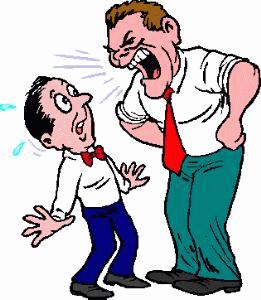Mobbing as a pathological phenomenon is repeated systematically and has been present in workplaces for many years. Its feature is the victim’s vulnerability towards the mobber (that is the name of the person who uses mobbing behavior). Acts of physical violence alone are not the essence of mobbing.

Mobbing can be used as active and passive mobbing.
Active mobbing can be defined as placing too much responsibility on the employee while limiting his decision making ability, which causes the employee to feel threatened.
Passive mobbing is a repeated state of disregard for an employee by, for example, not giving him instructions.
The institution of mobbing was introduced to the Labor Code by the provisions of the Act of 14.XI.2003 amending the Act – Labor Code and amending some other acts, but it entered into force on January 1, 2004.
In accordance with art. 94 [3] § 2 of the Labor Code (CCP) mobbing means:
- actions or behaviors concerning the employee or directed against the employee, Mobbing applies only to employees, persons performing work on a basis other than an employment contract, may not benefit from the indicated regulation. However, they may refer to provisions on the protection of personal rights, mainly violation of good name, or the provisions of the Penal Code. An employee applying for a claim is obliged under art. 6 of the Civil Code prove that the employer has committed activities that violate the law.
- relying on persistent and prolonged The introduction of this element into the regulation has narrowed its use. This means that one-off behaviors cannot be considered mobbing, regardless of whether they fulfill the remaining features of illegal activity. It should be noted, however, that the Labor Code does not explicitly specify the period after which it would qualify a given behavior as mobbing. A doctrine that accepts a period of six months comes to the rescue. In addition, intimidation, humiliation, and bullying activities must also occur regularly at least once a week. Turning off one-off incidents by the legislator does not mean that they will be tolerated. In such a situation, the injured employee is protected by the provisions on the protection of personal rights.
- harassing or threatening an employee, The International Labor Organization lists in its expert reports, several dozen behaviors that can exhaust the signs of violence in the workplace. This include threats, insults, ostracism, rude gestures, swearing, screaming, pushing and other forms of physical violence. The doctrine notes that mobbing can constitute behaviors such as;
- for unreasonable criticism,
- for public humiliation and public reprimands,
- for ambiguous commands,
- for threatening with dismissal,
- o impassable deadlines for the execution of the order,
- for ambiguous commands,
- for forced stay after working hours,
- for coercion to work in depraving conditions,
- for assigning meaningless tasks to perform,
- spreading malicious gossip,
- for abusive letters, emails,
- for telephone terror
- for hostile looks.
- impacts hindering the ability to communicate,
- impacts that disturb social relations,
- actions aimed at disturbing the social perception of a person,
- activities affecting the quality of life and professional situation,
- activities having a detrimental effect on the health of the victim
- causing him an underestimated assessment of professional suitability, causing or aiming to humiliate or ridicule an employee, isolate him or eliminate him from the team of employees. The existence of mobbing depends on the employer’s pathological actions, which result in an underestimated assessment of the employee’s professional suitability, humiliation or ridicule, isolation, or finally elimination from the team of employees.
It should be noted that the employer’s actions do not have to be unlawful, it is enough for them to have one of the effects indicated.
The behavior of the mobber is therefore intended to be humiliating or ridiculing an employee, isolating him from his colleagues or eliminating him from a team of colleagues.
In the first paragraph of art. 94 [3] CCP the legislator imposed an obligation on the employer to counteract mobbing.
These activities should be carried out in two directions, i.e. anti-mobbing prevention and follow-up.
The employer is responsible towards the employee for acts fulfilling the hallmarks of mobbing, such as his responsibility is extended to situations in which he violated the obligation to counteract mobbing.
The employer is also responsible for mobbing committed by an employer’s associate, another employee, contractor, person providing work to the employer on a basis other than the employment relationship, and even a spouse or adult child near the employer. Such a broad catalog of employer responsibility encourages to counteract the pathological situation which is mobbing and is an important element of the protection of employees’ rights.
The law also provides for criminal liability of the employer, including for using violence or unlawful threat, slandering a person, malicious or persistent violation of employee rights, failure to comply with health and safety obligations by exposing them to the immediate danger of losing their lives or causing serious damage to health.
In paragraph 3 of the discussed article regulating mobbing, i.e. 94 [3] the legislator regulates the entitlement of an employee whose mobbing caused health disorder.
In this situation, the employee has the opportunity to claim the appropriate amount from the employer as monetary compensation for the harm suffered.
The employer is also responsible for the overall harm suffered by the employee. In this case, it is appropriate to take into account factors such as the severity of suffering, persistence of consequences and consequences of personal and social damage.

